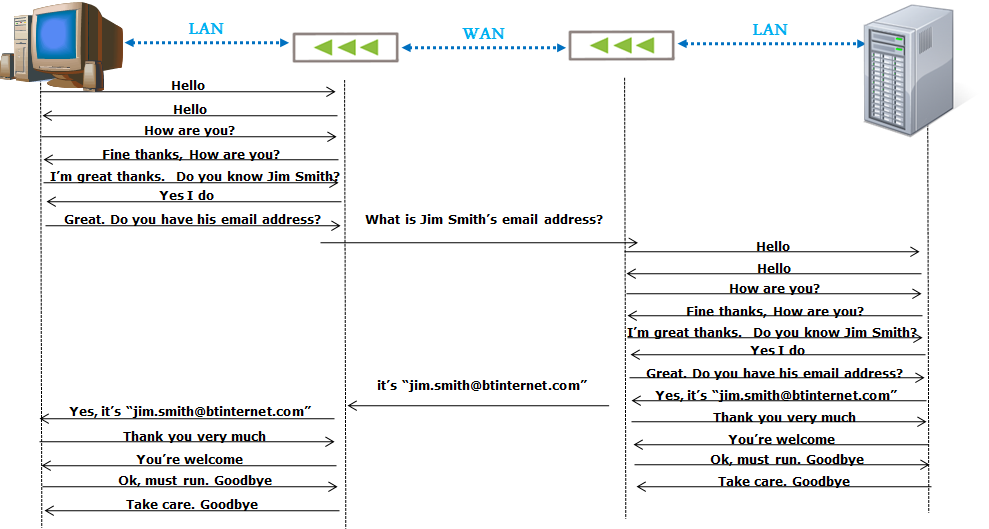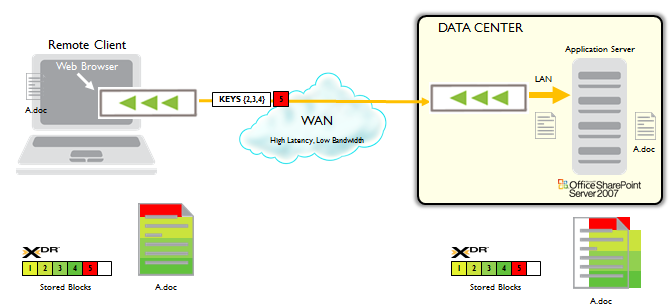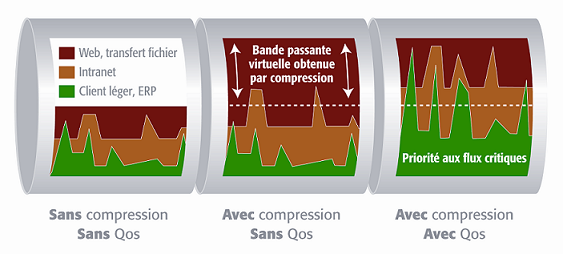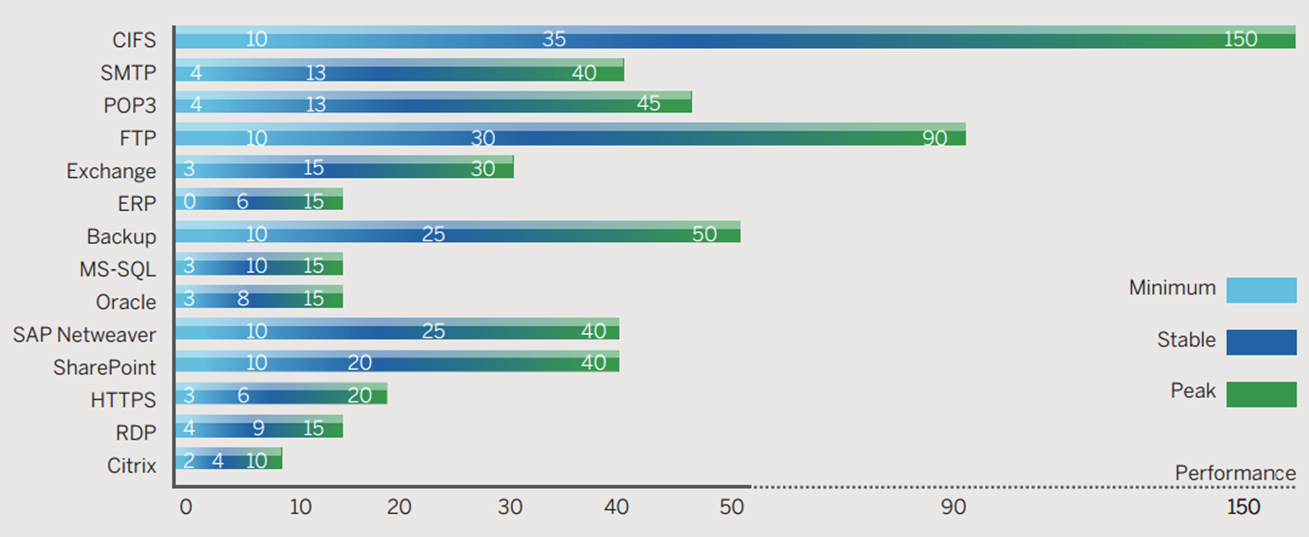Acceleration
Introduction
Enterprise networks are changing. Site and server consolidation is centralizing IT infrastructure in data centers, cloud computing is providing outsourced IT services, and users need more flexibility to move between offices, to telecommute, and to access resources remotely when they travel. As a result, more and more users are remotely accessing the applications they use on a daily basis.
The applications users access are also becoming more network dependent, providing richer interfaces, enhanced collaboration capabilities, or allowing users to participate in complex business processes.
The growth in the number of remote users (e.g. telecommuting) and content-rich applications is driving the need for WAN optimization technologies. Streamcore provides WAN optimization features that focus on the user experience while using applications, but also reduce bandwidth for lower telecom budgets.
Users also use the network with several types of equipment (laptops, smartphones and tablets). Depending on the business, some users may have up to 3 devices.
Our acceleration solutions manage all the flows through all the user equipment.
Optimization techniques
Streamcore provides comprehensive WAN optimization features, specifically designed to meet application needs. Three categories of optimization are offered:
- Protocol acceleration
- Deduplication
- Compression
Protocol acceleration is the only method that is directly dependent on the protocol used on the network. Deduplication and compression provide a benefit regardless of the protocol or the data being transferred.
Protocol acceleration
Protocol acceleration analyzes the sequence of messages for defined protocols, and ensures that redundant requests are suppressed and do not traverse the WAN. The acceleration client or user-side appliance recognizes requests made to application servers and identifies the protocols used in the requests. Many protocols do not use the network efficiently, making unnecessary requests, or calling in small amounts of information inefficiently.
Streamcore provides a catalog of protocol accelerators to make them more efficient. These combine with other optimization methods to ensure that inbound and outbound traffic to systems such as email (via MAPI or HTTPS), file shares (CIFS/SMB), collaboration tools, and ERP applications are fully optimized.

CIFS acceleration
A typical example of a non-efficient protocol is the Common Internet File System (CIFS). CIFS provides the ability to share files within a Windows environment. The CIFS protocol was not designed to take into account the constraints of WANs; it transfers data across the network in small requests, resulting in inefficient network utilization for large files. Smaller requests are very sensitive to lower latency on the connection, which impacts user experience.
Streamcore intercepts CIFS requests traversing the network and identifies when large content is being transferred. Rather than generating small requests for this content over the network, Streamcore gathers blocks of the content in a cache. The gas pedal then delivers the entire content from the cache to the client, rather than generating a multitude of small requests over the network.

This cache significantly reduces the number of requests crossing the network, thus avoiding latencies that affect user experience. For example, the number of requests for a 2 Mb file across a WAN with 200ms latency is reduced from 234 to 3 requests per second with the gas pedal cache. This reduces user wait time from one minute to 15 seconds.
HTTP Acceleration
Streamcore HTTP acceleration includes header identification and handling, NTLM authentication pooling, and HTTP de-chunking. This protocol optimization primarily ensures that block caching and compression works efficiently on the largest possible portion of network requests.
Https / SSL acceleration
WAN connections are often secured using Https/SSL encryption, which guarantees the confidentiality of the communication. Thus, if the information is intercepted by an unauthorized third party, it appears as random data. This encryption can therefore prevent the acceleration from working.
Streamcore helps accelerate such encrypted information – ensuring that identical data sequences are recognized between requests, allowing compression to work efficiently. Optimizing encrypted information requires an appliance in the datacenter that has the certificate for all encrypted application servers. The certificates never leave the datacenter. All data transferred from the client to the Virtual Appliances remains on fully encrypted sessions, ensuring confidentiality of communications.
Other protocols
Streamcore features various optimizations that help identify and accelerate traffic for particular protocols. These other supported protocols currently include MAPI (via RPC or over HTTP), print servers, Double Take, iSCSI, RDP, SQL and VNC.
If a protocol is not currently supported directly by Streamcore, it will be optimized through deduplication and compression.
Deduplication
Streamcore deduplicates redundant sequences of information (in the form of blocks) as the data travels across the WAN. The processing is bi-directional, replacing identical data sequences with a logical reference to cached data when the information is sent or received by the application servers.

When Streamcore is used to optimize connections to an application server, the data sequences transferred between users and the server are learned. If a sequence is identified more than once, a reference (logical pointer) to that sequence is sent over the network rather than the original data block. This significantly reduces the traffic of similar content on the network.
These algorithms ensure that a sequence crossing the network has already been identified and can be replaced by a logical reference. The size of the cache is configurable. The technology ensures that the most frequently identified sequences remain in the cache and that the less frequent ones are deleted.
Streamcore works regardless of the type of traffic or application server, and detects identical sequences among independent applications; for example, if similar content is identified in an email attachment and in a shared file copy. Streamcore is particularly effective in collaborative scenarios where information is retrieved, modified and sent back across the network. Because it is bidirectional and protocol independent, Streamcore will replace data with logical references if, for example, a user downloads a file from a business application and then sends it to another collaborator via email.
Compression
Compression will work in conjunction with protocol acceleration and deduplication to further reduce application borrowing over the WAN. The boxes will compress on the fly the data passing through the network. Compression will work on identical sequences of the same data to reduce its overall size. The appliance (or any acceleration element) located at the other end of the network across the WAN will decompress the streams to restore them correctly to the user.
Compression is particularly effective on text data (HTMPL, XML, SQL queries, etc.).

The acceleration technologies are implemented end-to-end between two StreamGroomers; the Appliances generate a common repository and can then exchange logical pointers that represent the sequences transiting the WAN.
Expected gains
Streamcore’s various optimization methods combine to reduce the amount of data transiting over the network as much as possible, thus improving the user experience of remotely accessed applications. Acceleration typically reduces the amount of information by 70 to 90%, depending on the type of data and the redundant sequences passing through the network.

The bandwidth gain is highly variable because it depends on the type of flow in transit on the network.